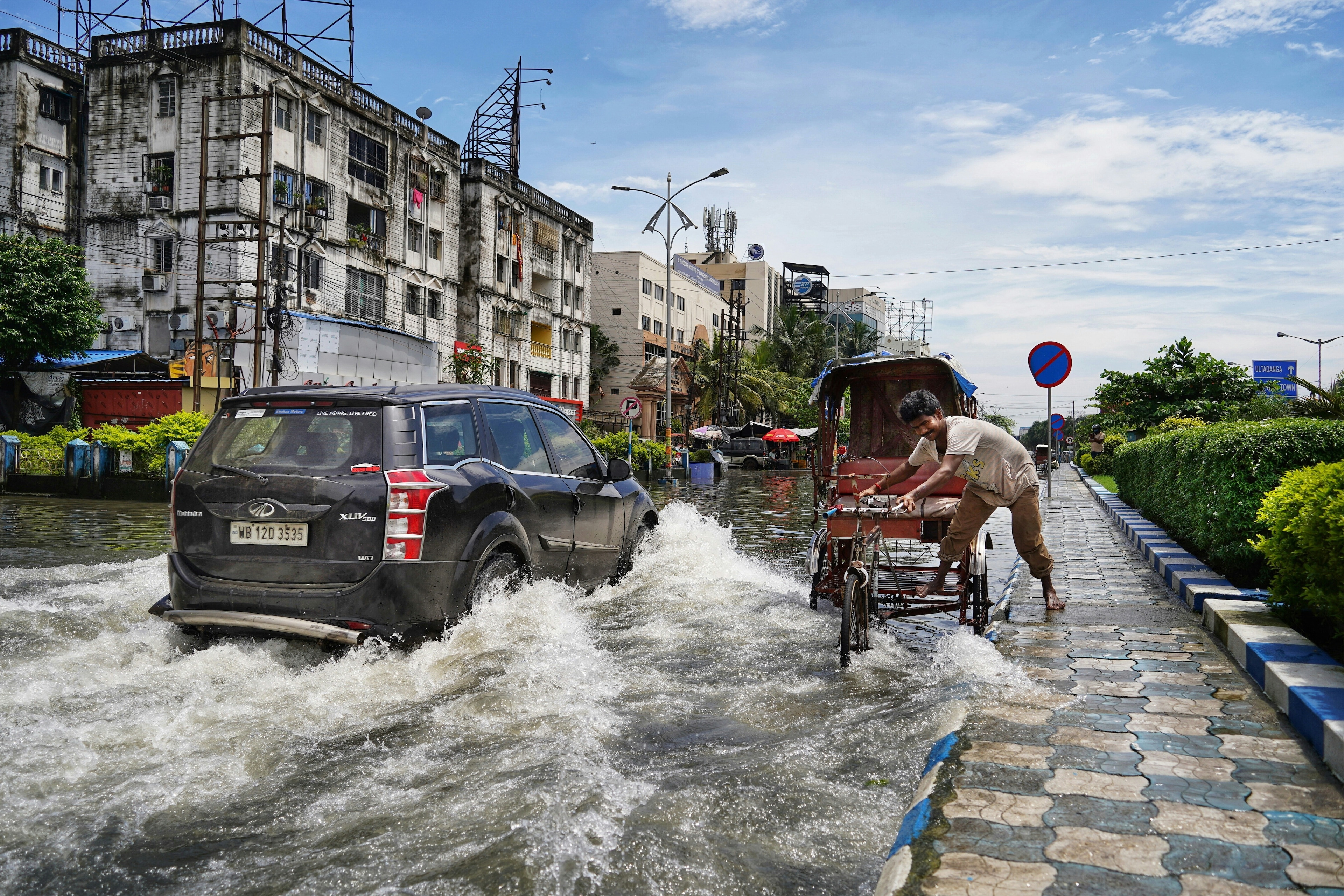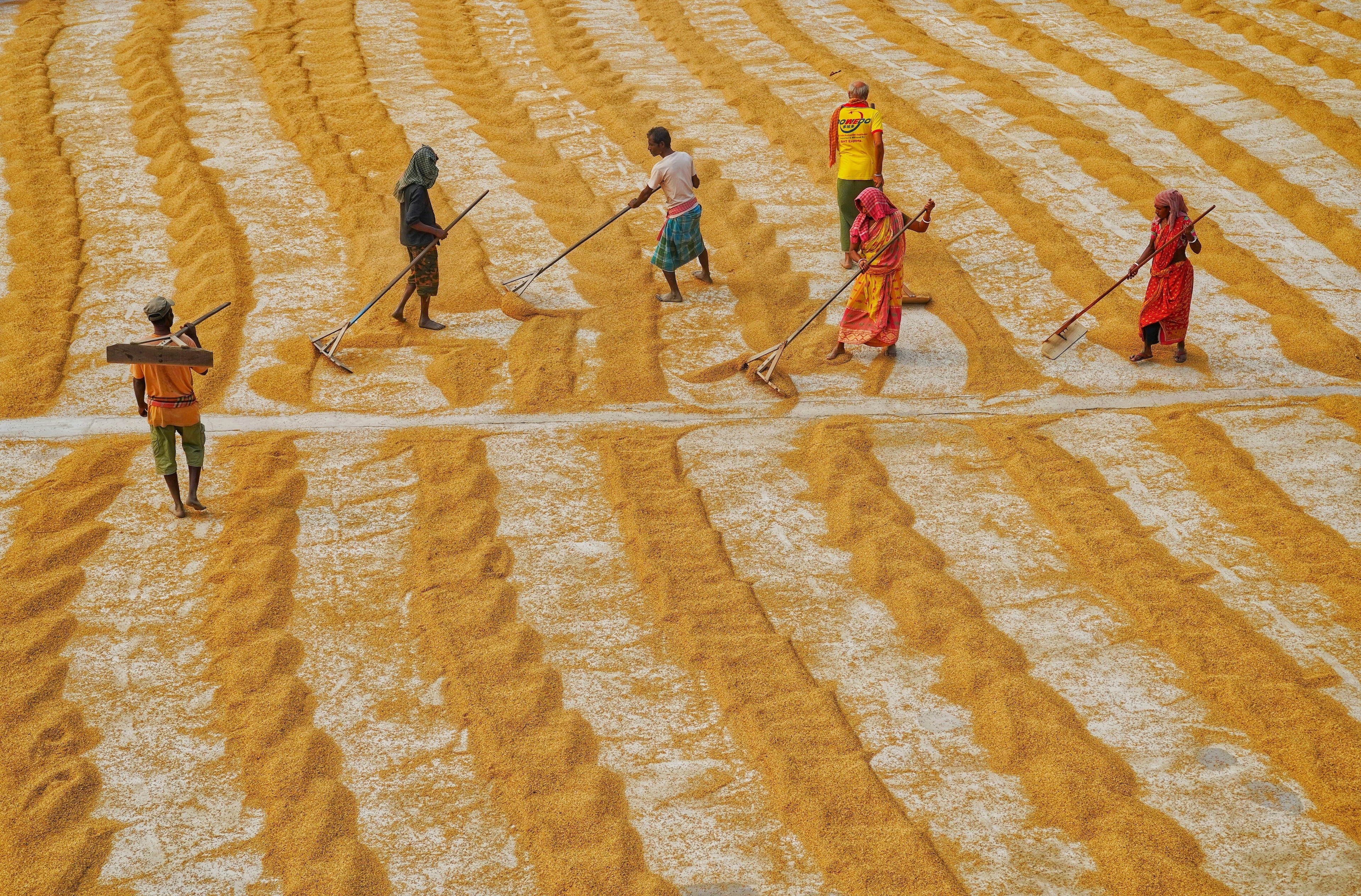Wildfires are raging in Russia: How can we reduce the threat?

Russia lost an area of forest larger than Switzerland from 2011 - 2013 due to wildfires.
Image: REUTERS/Alexey Malgavko
Stay up to date:
How to Save the Planet
Listen to the article
- A heatwave in Siberia has seen record temperatures that have fueled wildfires.
- Unlike wildfires at lower latitudes, Arctic fires are a natural part of the system and are often left to burn out.
- Climate change increases the likelihood of wildfires, which in turn release emissions that will exacerbate climate change.
- Collaboration between Indigenous Arctic communities to share knowledge on how to manage wildfires is essential in reducing the threat to people and the planet.
The city of Yakutsk, capital of Russia’s northeastern Yakutia region, has long been known as the coldest city on Earth.
In winter, temperatures plummet to -40C, and it’s the only city to be built on permafrost.
In July, temperatures are usually around 20C. But this year, record-breaking summer temperatures saw the mercury hit 35C in Yakutsk - in a heatwave that has fuelled wildfires in Siberia’s coniferous taiga forests.

Unlike wildfires that burn at lower latitudes, such as in California, which are often started by humans, Arctic wildfires are mostly started by lightning strikes. They are normally left to burn out unless they threaten human settlements. But Russian army planes have been sent to fight the fires that have raged across 800,000 hectares of forest in recent weeks.
Russia has the biggest area of tree cover in the world - at 882 million hectares. But it lost an area larger than Switzerland each year between 2011 and 2013 - mostly due to fires - according to the World Resources Institute. And the fires have only become more intense in the years since.
A growing number of studies have shown that climate change increases the likelihood of forest fires because it creates the weather conditions that favour them - hotter, longer summers which means trees drying out and permafrost thawing.
In recent years, Siberia’s annual fires - a natural part of the taiga ecosystem - have been more frequent and ferocious, burning larger areas. And the risk will only increase, scientists say, as lightning strikes become more common.
The climate change feedback loop
In May, scientists warned the warming Arctic tundra would make it harder to tackle climate change, as the thawing permafrost and wildfires release greenhouse gases not taken into account in global emissions agreements.
What’s the World Economic Forum doing about climate change?
The thawing releases carbon dioxide and methane from the once-frozen soil, threatening to create a feedback loop, which would contribute to yet more warming of the atmosphere.
The permafrost study found 2019’s wildfires in Russia’s Arctic regions released the highest emissions since 2003 - and last year it was 35% more.
Collaborating to protect the Arctic
More research is needed to predict and understand wildfires in the Arctic - and pan-Arctic collaboration and cooperation is vital to address the threat to human lives, ecosystems and climate change, say climate scientists.
“To prepare for these 21st century changes to the Arctic fire regime, evidence-based fire monitoring and management - including prevention strategies - must incorporate Indigenous and local knowledge in the Arctic,” write scientists in the journal Biogeosciences.
Collaboration is happening. Russia took over chairmanship of the Arctic Council this year, a position it will hold until 2023, with the priority of achieving ‘responsible governance for a sustainable Arctic’.
Climate change issues were high on the agenda when the Council met for its biennial meeting in Iceland in May, with delegates from Indigenous communities, as well as Russia, the US, Canada and Scandinavian nations.
The Circumpolar Wildland Fire Project was set up by the Council’s Emergency Preparedness, Prevention and Response working group last year to coordinate training and the response to fires in the Arctic region, and promote international cooperation and contracting of resources across State boundaries.
And Russia is launching a permafrost monitoring system that will give early-warnings of degradation and potential consequences.
Restoring forests to combat climate change
Planting trees to restore the Arctic taiga forests can help to mitigate climate change to reduce the threat of wildfires - but it’s not enough on its own to absorb the emissions from fossil fuels.
Young environmentalist Marianna Muntianu, a UN Young Champion of the Earth was motivated to plant trees after witnessing the damage caused by wildfires in 2010 in her home region of Kostroma. She now runs the Russian Climate Fund and aims to plant a billion trees by 2030.
Accept our marketing cookies to access this content.
These cookies are currently disabled in your browser.
The World Economic Forum’s 1t.org aims to conserve, restore and grow a trillion trees before the end of this decade, partly to reforest areas of woodland destroyed by wildfires.
The initiative aims to enable the kind of partnerships that will lead to a reduction in wildfires and more sustainable forests for future generations.
Accept our marketing cookies to access this content.
These cookies are currently disabled in your browser.
Don't miss any update on this topic
Create a free account and access your personalized content collection with our latest publications and analyses.
License and Republishing
World Economic Forum articles may be republished in accordance with the Creative Commons Attribution-NonCommercial-NoDerivatives 4.0 International Public License, and in accordance with our Terms of Use.
The views expressed in this article are those of the author alone and not the World Economic Forum.
Related topics:
Forum Stories newsletter
Bringing you weekly curated insights and analysis on the global issues that matter.
More on Climate ActionSee all
Michael Fröbel and Stanislas Hillen
August 8, 2025
Elizabeth Henderson and Daniel Murphy
August 8, 2025
De Rui Wong and Keebum Kim
August 7, 2025
Aurora Matteini and Derek Baraldi
August 6, 2025
Tom Crowfoot
August 5, 2025
Sverre Alvik
August 5, 2025






